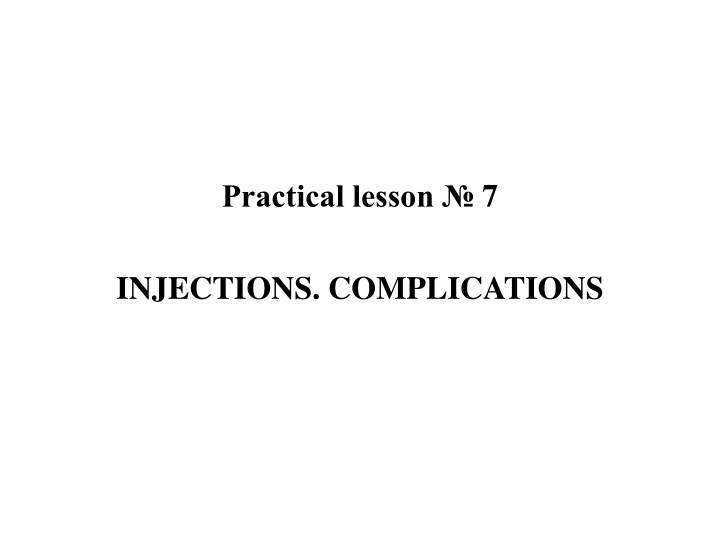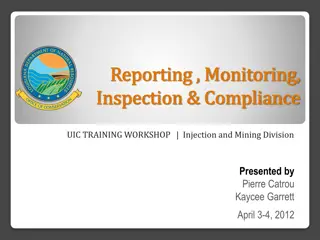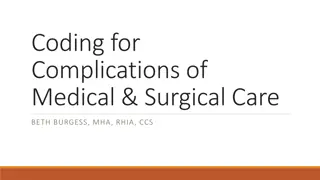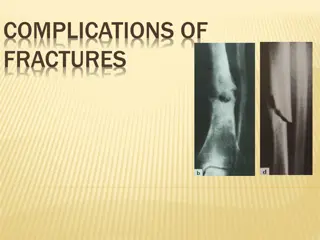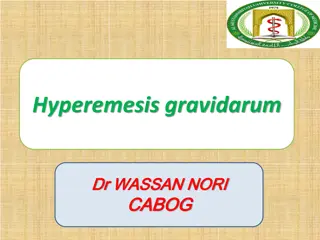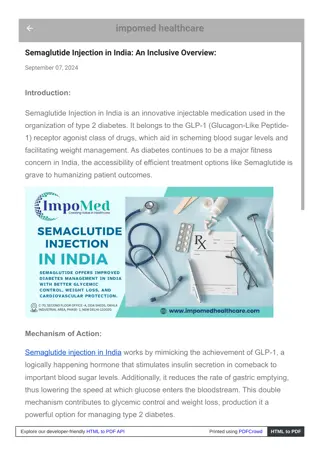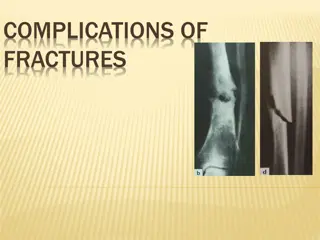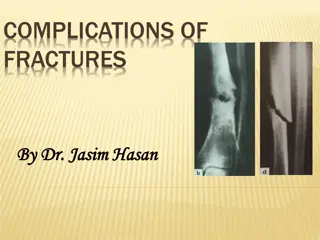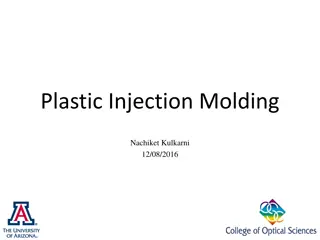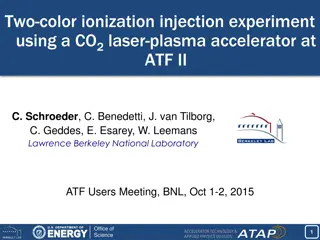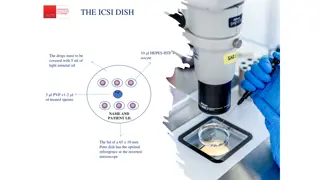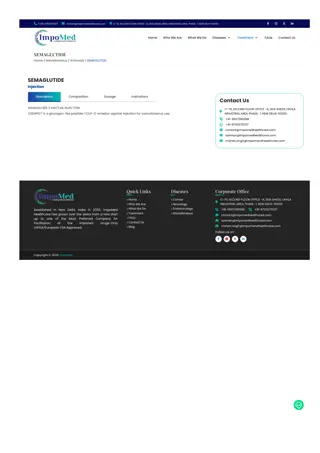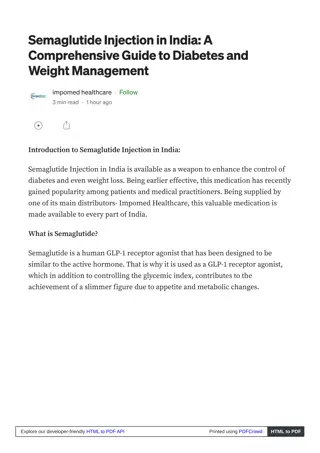Practical Lesson 7: Injection Complications Overview
Injections are a common medical procedure, but they can lead to various complications such as infiltrate, abscess, thrombophlebitis, and more. Learn about the causes, symptoms, and nursing care for each complication.
Download Presentation

Please find below an Image/Link to download the presentation.
The content on the website is provided AS IS for your information and personal use only. It may not be sold, licensed, or shared on other websites without obtaining consent from the author.If you encounter any issues during the download, it is possible that the publisher has removed the file from their server.
You are allowed to download the files provided on this website for personal or commercial use, subject to the condition that they are used lawfully. All files are the property of their respective owners.
The content on the website is provided AS IS for your information and personal use only. It may not be sold, licensed, or shared on other websites without obtaining consent from the author.
E N D
Presentation Transcript
Practical lesson 7 INJECTIONS. COMPLICATIONS
THEORETICAL QUESTION Parenteral administration. Definition. Methods of the parenteral administrat. Advantage and Disadvantages. Syringe. Classification of syringes. Intradermal Injection. Definition. Purpose. Site of injection. Subcutaneous Injection. Definition. Site of injection. Intramuscular inject. Definition. Site of injection. Intravenous injection. Definition. Site of injection. Factors complicating intravenous injection. Possible complications after injection. Infiltrate. Infiltrate. Causes. Clinic. Nursing care. Abscess. Infiltrate. Causes. Clinic. Nursing care. Long-term complications. Infiltrate. Causes. Clinic. Nursing care. Thrombophlebitis. Infiltrate. Causes. Clinic. Nursing care. Hematoma or hemorrhage. Infiltrate. Causes. Clinic. Nursing care. Needle breakage. Infiltrate. Causes. Clinic. Nursing care. Necrosis. Infiltrate. Causes. Clinic. Nursing care. Air embolism. Infiltrate. Causes. Clinic. Nursing care. Nerve damage. Infiltrate. Causes. Clinic. Nursing care. Allergic reaction. Infiltrate. Causes. Clinic. Nursing care. PRACTICAL SKILLS Intradermal Injection. Subcutaneous Injection. Intramuscular inject. Intravenous injection. Preparation medicines (take out from an ampule)
Possible complications after injection: Infiltrate Abscess Thrombophlebitis Hematoma or hemorrhage Needle breakage Necrosis Air embolism Nerve damage Allergic reaction Long-term complications
Infiltrate Infiltrate - local inflammation of the soft tissues. Causes: violation of the asepsis rules multiple injections in one place. Clinic: redness at the injection site, induration, swelling pain, local temperature rise. Nursing care: tell your doctor stop injections into this area, hot compress or hot water bottle into the place of infiltration physiotherapy
Abscess Abscess - purulent inflammation of soft tissue with formation of a cavity filled with pus. Causes: gross violation of the asepsis rules weakening of the immune system multiple injections in one place violation of the injection techniques Clinic: Severe pain at the injection site, Induration, Edema Limited accumulation of pus Total temperature rise. Nursing care: Tell your doctor Follow the important doctor's prescriptions Stop injection in this area Dissection of abscess if necessary.
Thrombophlebitis Thrombophlebitis - acute inflammation of the veins and the formation of an infected thrombus. Causes: gross violation of the rules of asepsis multiple injections in one place Clinic: Redness of the skin at the injection site, Swelling at the injection site, Painful and tight vienna at a palpation, Local temperature rise. Nursing care: tell the doctor, follow the important doctor's prescriptions stop injections in this area, apply a hot compress, physiotherapy, ointment, improving blood rheology.
Hematoma or hemorrhage Hematoma - bleeding under the skin. Most often this is the result of the intravenous injection. Causes: Violation of intravenous injection technique (insertion of the needle into the vein at an angle more 15 and the perforation of the two walls of the vein). Clinic: Painful in site of injection Bluish skin in site of injection. Nursing care: Injection stop. Press the damaged vein for a few minutes with a cotton ball with alcohol. Hot compress Introduction of the drug into another vein.
Needle breakage. Causes: sharp contraction of the muscle during an intramuscular injection in the standing position, inserting of the needle at the entire depth. Nursing care: Quickly remove chip of the needle from the tissue with your fingers. If the needle is completely in the tissue - immediately call a physician, preferably a surgeon. Surgical intervention is required at such complication.
Necrosis Necrosis tissue death. Causes: insertion the drug substance with irritating properties in the soft tissue. Clinic: a sharp pain, burning, swelling at the injection site blisters or ulcers Nursing care: 1. Stop injection. 2. Introduce 0.5% solution of novocaine into injection site. 3. Put the ice pack on the injection site. 4. Tell your doctor.
Air embolism Air embolism - obstruction of vessels of the pulmonary circulation with air bubble. As a result of disturbed nutrition and surrounding tissue necrosis develops. Causes: insertion the drug substance with air Clinic develops rapidly (within 1 minute). Symptoms of pulmonary vascular embolism: Sudden attack of breathlessness Cough Pain in chest blue upper body (cyanosis). Treatment: absence of treatment.
Nerve damage Causes: Incorrect selection of injection site. Clinic: Pain, violated function of limbs. Treatment: Call a physician to perform the prescribing physician.
Allergic reaction: Type: local reaction (urticaria), general reaction (anaphylactic shock)
Urticaria Clinic: red itchy rash in various sizes. The rash may be at the injection site or spread throughout the body. Treatment: Stop injection. Call a physician. Perform the prescribing physician.
Anaphylactic shock. This is the most severe allergic reaction. Clinic: sudden feeling of weakness laryngeal edema, shortness of breath, decreased blood pressure, a weak and rapid pulse loss of consciousness. Death can occur from acute respiratory failure, sometimes within a few minutes. First aid call a physician, put the patient on the back, head turned to the side, raise legs, inject 0.5 ml of epinephrine intramuscularly, carry out resuscitation, if necessary.
Long-term complications: Sepsis (infection in the blood), blood hepatitis (B, C), HIV infection
